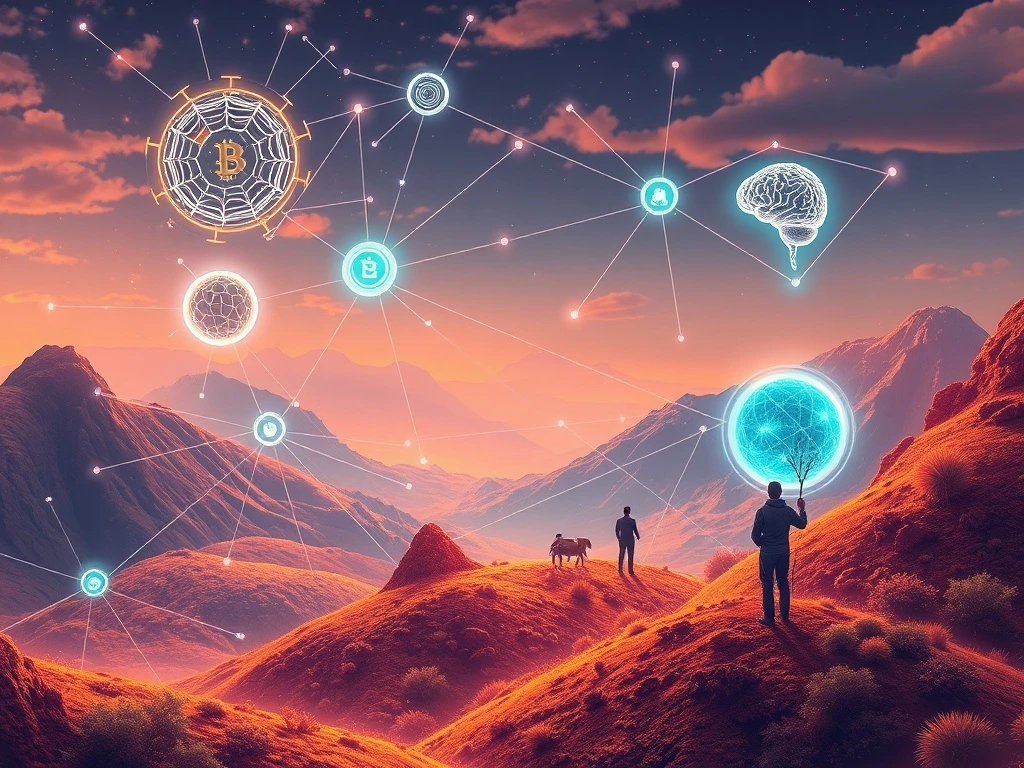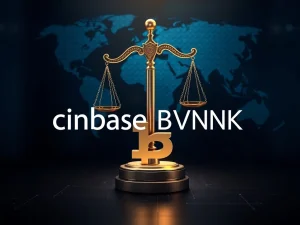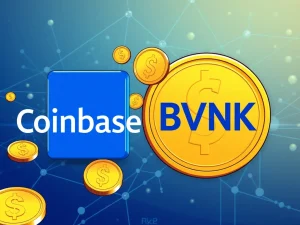Decentralized Work Revolutionizes the Web3 Economy: Empowering the Future of AI and Data

The digital landscape is undergoing a profound transformation, ushering in an era where the very nature of work is being redefined. Welcome to the Web3 economy, a decentralized frontier where innovation isn’t just encouraged—it’s incentivized. At the heart of this evolution lies decentralized work, a paradigm shift that empowers individuals globally to contribute their skills and resources without the traditional confines of corporate structures. Are you ready to explore how cutting-edge blockchain platforms are making this a reality?
The Dawn of Decentralized Work: Reshaping the Web3 Economy
For decades, the traditional employment model has dictated how we work: centralized companies, fixed salaries, and hierarchical structures. But the advent of blockchain technology is dismantling these barriers, paving the way for a more open, transparent, and equitable labor market. In July 2025, a trio of visionary blockchain platforms—Oraichain, Pinlink, and RSS3—are at the forefront of this movement, demonstrating how individuals can truly own their contributions and earn directly from their expertise and resources within the burgeoning Web3 space.
This isn’t just about remote work; it’s about permissionless participation, where anyone, anywhere, can offer their skills or assets and be rewarded directly through tokenized incentives. It’s a profound shift that promises to unlock immense global talent and foster unprecedented collaboration, redefining what it means to be a contributor in the digital age.
Empowering Creators with AI-as-a-Service: Oraichain’s Innovative Approach
Imagine a world where your specialized AI skills are in demand, accessible to anyone, and instantly monetized. This is the promise of Oraichain, a pioneering platform operating a global, permissionless marketplace for AI-as-a-Service. Here, AI developers and data scientists can offer their expertise as modular services, earning ORAI tokens based on the verifiable quality and utility of their contributions.
Oraichain fosters a fluid, project-based labor market, effectively removing traditional employment barriers. This allows for seamless cross-border collaboration, aligning incentives with measurable outcomes. Key benefits include:
- Global Access: AI developers from any corner of the world can participate and monetize their skills.
- Verifiable Quality: Contributions are rewarded based on their proven utility and quality, ensuring fair compensation.
- Project-Based Flexibility: Individuals can engage in diverse projects without long-term commitments, fostering agility and innovation.
This model showcases how specialized skills can be tokenized and exchanged, creating new avenues for income generation within the decentralized landscape.
Building a Distributed Infrastructure: Pinlink’s Decentralized Hardware Network
Beyond human expertise, the Web3 economy also values physical resources. Pinlink introduces a groundbreaking hybrid model for active and passive income by transforming hardware management into a decentralized workforce. Users can rent out their computational resources—be it GPUs, CPUs, or storage—to become infrastructure providers, earning PIN tokens as compensation.
This ingenious approach repurposes personal capital investments (like your gaming PC or home server) into operational roles within the AI-driven digital economy. It creates a distributed network of micro-scale compute nodes, democratizing access to powerful computational resources that are vital for AI development and decentralized applications. Pinlink’s focus on hardware democratization aligns perfectly with broader Web3 principles of decentralization and accessibility, ensuring that the foundational layers of the internet are owned and operated by the community, not just a few large corporations.
Sustaining Open Information: The Power of Community-Driven Data Indexing with RSS3
Information is the lifeblood of the internet, and in the Web3 era, ensuring its integrity and accessibility is paramount. RSS3 expands the concept of decentralized work through its Open Information Layer, which incentivizes individuals and groups to maintain data integrity across the decentralized web. By running RSS3 nodes, participants actively index and serve data, earning RSS3 tokens in exchange for their crucial contributions.
This model decentralizes information management, creating a distributed workforce dedicated to sustaining a global public good through protocol-driven coordination. The platform’s tokenized rewards system directly ties earnings to the utility of maintaining open data access, fostering a resilient and censorship-resistant information layer. RSS3 exemplifies how collective effort can maintain vital digital infrastructure, proving that essential services can thrive without central control.
Unlocking the Potential of Blockchain Platforms: Benefits and Challenges
Together, Oraichain, Pinlink, and RSS3 are dismantling traditional corporate hierarchies, replacing them with open, incentivized networks where skill and resource ownership determine participation. The convergence of AI-as-a-Service, decentralized hardware, and community-driven data indexing illustrates a powerful shift toward permissionless collaboration models. Unlike conventional employment structures, these systems prioritize:
- Transparency: All transactions and contributions are verifiable on the blockchain.
- Verifiable Contributions: Work is rewarded based on measurable outcomes, not just hours logged.
- Global Accessibility: Opportunities are open to anyone with the required skills or resources, regardless of geography.
- Tokenized Labor: Individuals can monetize niche skills or underutilized assets directly.
The evolution of work in this context reflects a broader trend of tokenizing labor and infrastructure, enabling individuals to monetize niche skills or underutilized assets. These blockchain platforms collectively address gaps in scalability, security, and inclusivity within traditional digital economies. By automating reward distribution through smart contracts, they reduce intermediation while ensuring direct value transfer between contributors and users.
However, the success of these initiatives hinges on their ability to maintain decentralization without compromising efficiency. As decentralized networks grow, challenges such as governance, energy consumption, and user adoption will require sustained innovation. Ensuring a seamless user experience, managing potential regulatory complexities, and fostering widespread understanding of these new models are crucial for long-term success. Despite these hurdles, the current models demonstrate a viable blueprint for reimagining work in the digital age, where collaboration is no longer confined by geography or institutional barriers.
Conclusion: A New Horizon for Work
The emergence of platforms like Oraichain, Pinlink, and RSS3 signifies more than just technological advancement; it marks a fundamental shift in how we conceive of work, value, and collaboration. By leveraging the power of blockchain, AI, and decentralized networks, these innovators are not just building new tools—they are crafting an entirely new paradigm for the future of employment. The Web3 economy, fueled by decentralized work, promises a future where individual agency, verifiable contributions, and global participation are not just ideals, but everyday realities. The journey has just begun, and the potential for an empowered, distributed global workforce is truly immense.
Frequently Asked Questions (FAQs)
What is decentralized work in the Web3 economy?
Decentralized work refers to a new model of labor facilitated by blockchain technology within the Web3 economy. It allows individuals to contribute skills or resources to projects and be compensated directly through cryptocurrency tokens, often without traditional employers or intermediaries. This model prioritizes transparency, permissionless participation, and global accessibility.
How do blockchain platforms enable decentralized work?
Blockchain platforms enable decentralized work by providing a secure, transparent, and immutable ledger for recording contributions and distributing rewards. Smart contracts automate payment and ensure fairness, while native tokens incentivize participation and align the interests of contributors with the network’s success. Examples include Oraichain, Pinlink, and RSS3.
What is AI-as-a-Service (AIaaS) in Web3, and how does it relate to decentralized work?
AI-as-a-Service in Web3 allows AI developers and data scientists to offer their expertise and algorithms as modular, on-demand services within a decentralized marketplace. Platforms like Oraichain enable individuals to monetize their AI skills, earning tokens based on the verifiable quality and utility of their AI solutions, thus forming a project-based, decentralized labor market for AI.
How does decentralized hardware contribute to the Web3 economy?
Decentralized hardware, as exemplified by Pinlink, allows individuals to rent out their computational resources (like GPUs or CPUs) to support decentralized applications and AI models. This creates a distributed network of infrastructure providers, democratizing access to computing power and enabling individuals to earn passive or active income by monetizing their underutilized hardware assets.
What role does community-driven data indexing play in decentralized work?
Community-driven data indexing, as seen with RSS3, involves individuals and groups running nodes to collect, index, and serve data across decentralized networks. This creates an open and censorship-resistant information layer. Participants are rewarded with tokens for maintaining data integrity and accessibility, effectively forming a distributed workforce that sustains a vital public good for the Web3 ecosystem.
What are the main challenges for decentralized work platforms?
Key challenges for decentralized work platforms include establishing effective decentralized governance models, ensuring scalability to handle growing user bases, managing energy consumption (especially for proof-of-work systems), and fostering widespread user adoption and understanding. Regulatory clarity and maintaining efficiency without centralization are also significant hurdles.







